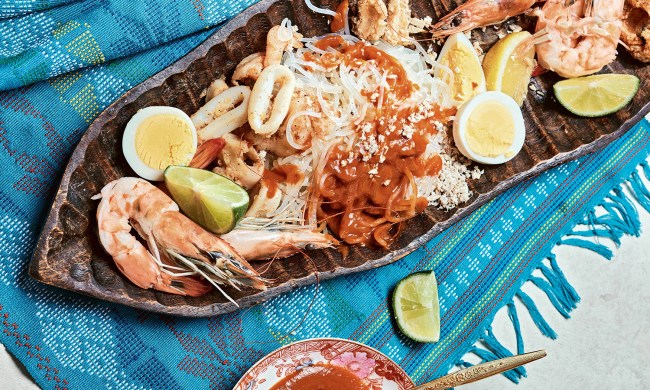Eating for your health doesn’t have to just be forcing yourself to consume piles of kale and steamed rutabaga. Don’t believe us? Just ask chef Seamus Mullen. After rising to fame at Boqueria in 2006, Mullen was diagnosed with rheumatoid arthritis, forcing him to revamp how and what he ate. Through a change in diet, lifestyle, and exercise regimen, Mullen was able to get a grip on the disorder and turn his life around.

What we’re trying to say is eating in a healthy way doesn’t always have to be bare bones and bland. Instead, it’s a matter of knowing what you’re eating, the quality of food that you’re eating, and how to best let the flavors of your foods shine. The recipe below, for a bacon and celery root soup, shows that off perfectly.
Of course, we were all about this recipe because it starts with bacon, but when you get past the fact it has one of our favorite meats in it, it is also rich and flavorful without being terrible for you.
If you’re in need of high-quality bacon, check out this list of the best artisan bacons money can buy. For more from Mullen, check him out on The Manual podcast.
Bacon and Celery Root Soup

(Serves 4)
Ingredients:
- 2 large celery roots, peeled (roughly softball size)
- 1 parsnip
- 1 leek
- 2 cloves of garlic
- 1 slice of thick-cut, pastured bacon, cut into 1-inch pieces
- 4 tbsp olive oil
- 2 tbsp champagne or white wine
- 2 cups macadamia milk (or any milk you prefer)
- 5 cups high-quality broth made from pastured bones
- Salt and pepper, to taste
- Cayenne pepper, to taste
- Sumac powder, to taste
Method:
- In a large pot, heat the olive oil over medium-high heat and add the bacon. Sweat for 3 minutes or so then add the parsnip, celery root, and leeks and continue to sweat for another 5 minutes.
- Add the garlic, sweat for another minute.
- Deglaze with vinegar, wait 30 seconds and add the broth/stock. Reduce to a simmer and cook until the vegetables are tender, about 25 minutes.
- Ladle the vegetables into a blender and then add the liquid and puree until smooth. With the blender running on the lowest speed add in the macadamia/almond/camel/donkey/cow’s milk and puree until silky. Whilst this is working give the pot a quick rinse.
- Return the soup to the pot and season with salt, pepper, and cayenne and add any additional vinegar should you want a little more acidity.
- Serve straight away or set aside in the fridge and save it for a moment when you are pressed for time.
- You can serve it with some crispy cubes of diced bacon as I have and a few sprinkles of sumac. Add your favorite greenery for the scenery should you desire. Presto!



